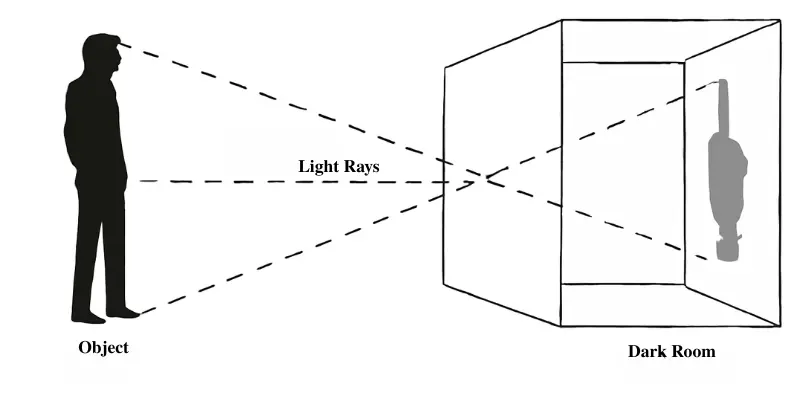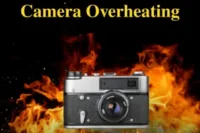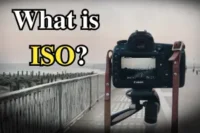What Is Camera Obscura? Understanding Its Impact on Photography
Published: 14 Jul 2025
Before the rise of digital photography, the journey of capturing light started with an ancient optical phenomenon known as the camera obscura. This simple yet interesting device paved the way for modern photography and helped artists and scientists better understand the behaviour of light.
In this article, we’ll explain in detail what is camera obscura, how it works, its historical significance, and why it is still relevant today. So, let’s dive in.
What is Camera Obscura?
The term camera obscura comes from the Latin words “camera”, meaning room or chamber, and “obscura”, meaning dark. In its simplest form, a camera obscura is a dark room with a small hole (or pinhole) in one wall. When light passes through this hole, it projects an upside-down and reversed image of the outside scene onto the opposite wall.

This optical phenomenon occurs because light travels in straight lines. The image you see in a camera obscura is created by the light entering through the small hole and spreading out to fill the opposite surface, producing an image that is a reflection of the world outside, though it appears upside down!
History of Camera Obscura
The concept of the camera obscura is ancient, with its earliest mention found in the writings of the Greek philosopher Aristotle, who observed how light passing through small openings in darkened spaces could form images. However, the first formal description came from Alhazen (Ibn al–Haytham), an Arab scholar in the 10th century. Alhazen is credited with conducting experiments and explaining the physics of the camera obscura, providing the groundwork for later developments in optics.
During the Renaissance period (14th to 17th century), artists like Leonardo da Vinci and Johannes Kepler used the camera obscura as a tool for sketching and understanding perspective. Its use in art allowed artists to trace the images projected onto the walls, making it easier to capture realistic proportions and depth. This historical connection to art and science highlights the importance of the camera obscura in the development of both fields.
How Does Camera Obscura Work?
At its core, the camera obscura functions on a fundamental law of physics: light travels in straight lines. When light from an external scene enters through a small opening (aperture) into a darkened space, the rays cross paths and project an image onto the surface opposite the hole. Due to this crossing, the image appears inverted and reversed—upside down and flipped from left to right.
Key Steps in the Functionality of Camera Obscura:
- Light enters through the small hole (aperture).
- The image from the outside world is projected onto the opposite surface.
- The resulting image is flipped and inverted due to the light rays crossing each other.
While the concept is simple, it shows key principles of optics that were the foundation for the development of later technologies, including the modern camera.
Uses of Camera Obscura
The camera obscura is more than just a historical curiosity—it has practical applications even today. Here’s how it has been used throughout history and continues to influence many fields:
In Art:
One of the most significant uses of the camera obscura was by artists in the Renaissance. Artists like Vermeer used it to project scenes onto canvases, allowing them to create highly detailed, realistic representations of the world. By tracing the projected image, artists could achieve perfect proportions and perspective.
In Photography:
Before the invention of the modern camera, the camera obscura played a crucial role in understanding light and image formation. It helped scientists and inventors develop the early photographic techniques that eventually led to the invention of the camera.
In Education and Science:
Today, the camera obscura is still used as a teaching tool in schools and museums. It helps students and visitors understand basic optical principles and the behavior of light. Some science museums feature large, room-sized camera obscuras, providing an immersive experience by projecting the outside world inside the space.
Advantages and Disadvantages of Camera Obscura
Like any technology, the camera obscura has its pros and cons. Let’s take a closer look:
| Benfits |
|---|
|
| Drawbacks |
|---|
|
How to Make a Camera Obscura at Home
Making your own camera obscura is a fun and educational activity that helps you experience the magic of light and optics firsthand. Let’s dive into the materials and steps you’ll need to get started:
Materials Needed:
- A cardboard box or shoebox
- A sheet of white paper
- Aluminum foil or black construction paper
- Scissors or a craft knife
- Tape or glue
- A small pin or needle
Steps:
- Prepare the Box: Cut a small hole (about the size of a coin) on one side of the box.
- Create the Aperture: Tape aluminum foil over the hole and use a pin to make a tiny hole in the foil.
- Blackout the Inside: Line the inside of the box with black paper to prevent light reflections.
- Add a Projection Screen: On the opposite side of the hole, tape a piece of white paper or foil to catch the projected image.
- Use Your Camera Obscura: Take the box to a brightly lit area, point the hole toward a scene, and look inside to see the projected image on the white paper.
Conclusion
The camera obscura is not just an old object of the past but an important part of the history of optics, art, and photography. By understanding its function and significance, we gain deeper information about the development of modern photography and the scientific principles behind the cameras we use today.
Whether you’re a history lover, an artist, or just someone curious about how light works, the camera obscura is a very interesting topic that remains relevant in today’s world.
Frequently Asked Questions (FAQs)
Here are answers to some of the most common questions about Camera Obscura :
Before photography, the camera obscura was mainly used by artists to project images for accurate drawing and painting. It helped capture realistic perspectives. It was also used by scientists to study light and optics.
The camera obscura demonstrated that light travels in straight lines. It helped scientists understand how images are formed and laid the foundation for modern optical devices, including cameras. Its principles are key to the development of photography.
A camera obscura is an optical device that projects an inverted image of the outside world onto a surface inside a dark room or box. The name comes from Latin, meaning “dark chamber.” It is the forerunner of modern cameras.
Yes, a pinhole camera is a type of camera obscura. Both work on the same principle of light passing through a small hole to form an image. However, pinhole cameras can capture permanent images, unlike the basic camera obscura.
The camera obscura played a crucial role in laying the foundation for the development of modern photography. It also remains a valuable educational tool for teaching light and optics, and its historical importance continues to inspire both artists and scientists.

- Be Respectful
- Stay Relevant
- Stay Positive
- True Feedback
- Encourage Discussion
- Avoid Spamming
- No Fake News
- Don't Copy-Paste
- No Personal Attacks

- Be Respectful
- Stay Relevant
- Stay Positive
- True Feedback
- Encourage Discussion
- Avoid Spamming
- No Fake News
- Don't Copy-Paste
- No Personal Attacks





